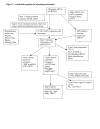Retrocopy contributions to the evolution of the human genome
- PMID: 18842134
- PMCID: PMC2584115
- DOI: 10.1186/1471-2164-9-466
Retrocopy contributions to the evolution of the human genome
Abstract
Background: Evolution via point mutations is a relatively slow process and is unlikely to completely explain the differences between primates and other mammals. By contrast, 45% of the human genome is composed of retroposed elements, many of which were inserted in the primate lineage. A subset of retroposed mRNAs (retrocopies) shows strong evidence of expression in primates, often yielding functional retrogenes.
Results: To identify and analyze the relatively recently evolved retrogenes, we carried out BLASTZ alignments of all human mRNAs against the human genome and scored a set of features indicative of retroposition. Of over 12,000 putative retrocopy-derived genes that arose mainly in the primate lineage, 726 with strong evidence of transcript expression were examined in detail. These mRNA retroposition events fall into three categories: I) 34 retrocopies and antisense retrocopies that added potential protein coding space and UTRs to existing genes; II) 682 complete retrocopy duplications inserted into new loci; and III) an unexpected set of 13 retrocopies that contributed out-of-frame, or antisense sequences in combination with other types of transposed elements (SINEs, LINEs, LTRs), even unannotated sequence to form potentially novel genes with no homologs outside primates. In addition to their presence in human, several of the gene candidates also had potentially viable ORFs in chimpanzee, orangutan, and rhesus macaque, underscoring their potential of function.
Conclusion: mRNA-derived retrocopies provide raw material for the evolution of genes in a wide variety of ways, duplicating and amending the protein coding region of existing genes as well as generating the potential for new protein coding space, or non-protein coding RNAs, by unexpected contributions out of frame, in reverse orientation, or from previously non-protein coding sequence.
Figures



References
-
- Bejerano G, Pheasant M, Makunin I, Stephen S, Kent WJ, Mattick JS, Haussler D. Ultraconserved elements in the human genome. Science (New York, NY) 2004;304:1321–1325. - PubMed
Publication types
MeSH terms
Substances
Grants and funding
LinkOut - more resources
Full Text Sources

